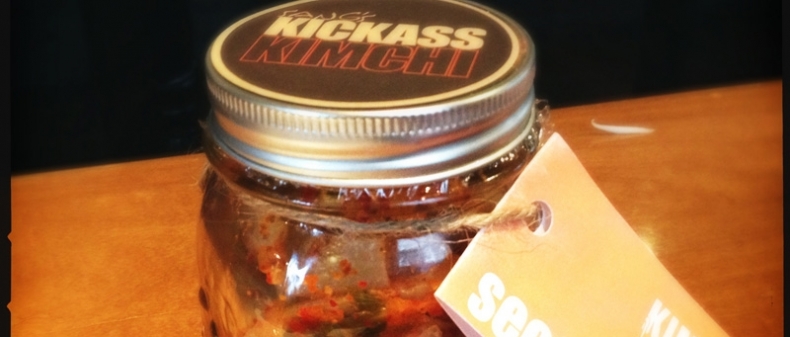
I thought I had signed up for a kimchi-making class. One where I’d walk in, be handed ingredients and a recipe, shown some technique, maybe be given some handy tips to keep me from screwing it up, and then I’d walk home with my own jar of kimchi and brag to friends, “I made this myself!”
In a way, I did do the above. Especially the braggy boasting, “My weekend? I just made kimchi. No big deal.” My lesson was the first of a new series of classes called ‘Kimchi Klub.’ This one was lead by professional Korean storyteller Seung Ah Kim, who has only been in Canada a few months. Held at Yakitori Bar, I learned that this fermented cabbage dish is more than the free side dish you get at Korean restaurants — it’s deeply rooted in family tradition and central to building a community. Traditionally, kimchi recipes were passed on from a grandmother, to the mother, and then to the daughter.
Kimchi recipes vary from family to family, and from region to region in Korea. So no, I didn’t walk away with a printed recipe, because most grandmothers don’t even write down their recipe. Seung Ah did show us how to make the recipe that was passed on to her. The basics of kimchi are salted nappa cabbage, daikon radish, red pepper sauce, and garlic. The additions you might be familiar with include shrimp paste, fish sauce, green onion, carrots, and even sweet Asian pear.
The owner of Yakitori Bar, Sang Kim, said, “When people ask, ‘What is kimchi?’ I tell them the generic answer is: anything within reach that a Korean can pickle.”
Making kimchi isn’t really that much work, and it isn’t very complicated. It doesn’t involve an endless list of ingredients, cleaning, chopping, or stirring. You just need to start with the right ingredients, but it does take time make kimchi. In other words, you can’t start it the same day you plan to serve it. The salted nappa cabbage is key. Seung Ah tells us that in Korea, women (who were typically the ones making kimchi) would try to source out the best quality salt believing that is the key to the best end product. Serious kimchi makers – perhaps of my grandmother’s generation — would carefully turn the cabbage in its saltwater bath every few hours and through the night. The same way someone might set a timer to baste a turkey every hour, or wake repeatedly to feed a baby.
Unlike a turkey, or a baby, the cabbage shrinks to about a third of its original size after being salted. It is ugly (no more comparisons to turkeys and babies). The chili flakes are the other key ingredient to kimchi. Seung Ah tells us stories about people searching for the best chili flakes they can find, or drying and grinding their own chilies if possible.
Once our chili paste is made by adding daikon radish, fish sauce, shrimp paste, garlic, and Seung Ah’s optional ingredients that include kelp water and sweet rice powder, it’s a matter of massaging it all in with out hands.
Then comes quality control. Sang’s mother, Sue Kim, is there. She is there cutting the daikon and mincing the garlic for us as we all make our masterpieces. There is not a single measuring cup or measuring spoon in sight. Everything is eyeballed. Which prompts me to ask, “Is this enough? How about now? Do I need more daikon? Is this ok?” Because I am insecure about my cabbage. I am self-conscious about my kimchi.
The participants in the class look around at each other as we taste a bit of what’s in our bowls. It tastes alright. It’s spicy, maybe not salty enough. We aren’t really sure if we’re on the right track. That’s when Sue walks around tasting a little from each bowl to determine if our kimchi babies have the right amount of salt. If we pass the grandmother test, we continue. If we do not, she will remedy it by adding more daikon (if it’s too salty), or more fish sauce if it’s not salty enough.
While the dozen or so people in the class didn’t learn their kimchi recipe by having it passed down from their grandmothers, we can at least say we had a grandmother approve the authenticity of our kimchi, and that gave us all the bragging rights we needed.
Follow Sushi Making For The Soul on Twitter: @eatMySushi
____













